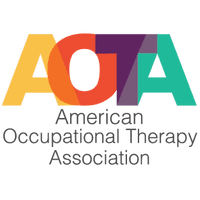Oral Motor Skills: Development, Milestones, Activities & More

Oral motor skills refer to the movements of muscles of the jaw, tongue, mouth, and lips. The facial muscles' tone, strength, and motion coordination empower your baby to move the oral structures that help in suckling, chewing, biting, facial expressions, and speech. [1]
Maturation and regular practice with the muscles in the oral cavity are critical factors determining the smooth development of oral motor skills. However, some children may experience a delay in oral motor skill development. [2] Occupational therapists and speech and language pathologists can work on the prevailing problems and facilitate proper oral motor development.
Oral motor skills development milestones
Typically, children follow a developmental pattern in their oral skills from birth. Babies develop facial features and critical reflexes in the mother's womb. Children experience rapid structural and neurological growth during the first three years of childhood.
Developing the reflexes of the jaw and tongue is a solid foundation for the development of the jaw and oral functions. [3] Typically, children experience the following developmental oral motor milestones and patterns: [2], [4]
Birth to three months: The suckling reflex makes sucking of milk possible as soon as the baby's lips touch the breasts. A full-term infant is ready to suck and swallow milk.
Three to seven months: Infants develop oral motor movements such as munching and the tongue's lateral and diagonal movement.
Seven to nine months: Your baby gains jaw stability, begins self-feeding, and munching on purees and other lumpy food. They can demonstrate lip closure, move food between the gums and cheeks, scraping food off from a spoon.
Nine to twelve months: Babies develop rotary patterns. They begin biting the food, and there is less spillage of food from the mouth. They can chew soft vegetable, pasta, and manage juicy food.
Two to three years: Toddlers develop more stable jaws, and they start eating firmer food by chewing and sweeping small food particles into a bolus. They develop a full rotary chewing action.
Three years and beyond: Children develop most rotary, circular, and semicircular chewing motions. They have controlled movements of the tongue.
During this entire process, on an anatomical level, there is development of nerves, muscles in the mouth and face, the hard and soft palate, and other postural changes. Children also develop speech, ranging from cooing, crying, blabbering to uttering small words and further learning to form and speak sentences.
How do I know my child has oral motor problems?
Typically, the problems surface in subtle ways, such as the inability to adapt to spoon-feeding, drinking from an open cup, or accepting changed food textures. [2] As a parent, you may look for the following warning signs in your child: [4]
Restricted breathing through the nose
Unable to have a free movement of the tongue
Develops a tongue thrust pattern (tongue protrudes during swallowing, speech, or rest)
Keeps mouth open
Holds the tongue to rest on the oral cavity floor persistently.
Keeps moving tongue laterally and forward while swallowing food
Fails to clear the spoon with the upper lip
Arches or stiffens the body during feeding
Fussy behavior while eating food
Take a long time for your child to finish eating
Catching frequent chest infections.
You child makes hoarse, gargling, or breathy sounds
Food leaks from the mouth while eating.
Stuffs mouth with food for a long time or holds food in pockets in the mouth.
Coughs up or gags to throw food during or after the meals.
Faces difficulty adapting to new textures and consistencies of food.
Frequent diarrhea or abnormal bowel movements
Parents should consider these signs as red flags and immediately consult a pediatrician. A comprehensive examination from specialists may help in a differential diagnosis to decide the future course of treatment.
Why is oral motor skill development so important?
Feeding your child can become stressful and challenging with a delay or dysfunction in oral motor development. Children with certain medical conditions are more likely to have dysfunction in oral motor development. These medical conditions include: [4], [5]
Autism spectrum disorder
Cerebral palsy
Poor muscle strength
Obstructive breathing
Cleft palate
Asymmetry in muscular development
Pre-term birth
Any dysfunction in the oral motor skill development may impact your child in the following ways: [2], [4], [6], [7]
Poor nutrition: Your child may have trouble sucking, swallowing, and breathing correctly, resulting in poor nutrition. They may also have difficulty with hard foods due to challenges with chewing. [2]
Lesser weight gain: Insufficient milk intake fails to satisfy hunger and hydration infants need; they behave fussily and show irritation. [6]
Drooling: Your child may continuously drool from a lack of muscle control or tongue control and lack of lip closure. [7]
Speech and communication problems: Children with poor oral motor development may later face speech difficulties and have communication problems.
How does therapy for oral motor development work?
An occupational therapist and a speech pathologist can diagnose the absence of particular oral motor skills and help your child develop them. Here are some examples of what you might expect during therapy: [2]
Oral muscle tone: The use of pressure, tapping, and vibration help improve muscle tone and strength.
Tongue and transport: Use of pressure on the lateral sides of the tongue stimulation of the anterior tongue tip may improve its movement.
Swallowing: Encourage swallowing a single bolus by making a tongue bowl. Close the lips around the spoon and use Nuk brushes to introduce new tastes and textures.
Grading jaw movement: Place the hand below the jaw to improve stability so that the child closes the jaw and chews tiny bites.
Sensory-motor interventions: For high-risk cases, use of pre-feeding stroking, proper positioning of a bottle, and external support of cheeks and mandible can improve feeding. Intraoral appliances for neuromuscular motor problems can also help overcome drooling and improve chewing and biting.
In addition to these therapies, behavioral interventions are also beneficial.
Activities & exercises for oral motor skills development
Tongue motion exercises
Tongue extension and retraction.
Side to side movement.
Tongue tip-up.
Movement of the tongue along the palate.
Exercises for tongue resistance
Push forward, upward, sideways, and inside.
Jaw exercises
Jaw opening by relaxing and stretching.
Jaw movements to the left and right sides.
The circular motion of the jaw.
Lip closure exercises
Lip retraction and protrusion.
Lip press.
Filling air in cheeks without allowing it to leak.
Pressing lips on a tongue depressor.
Bolus control exercises
Placing small boluses of paste-like consistency
Chewing of licorice stick
Helping your child develop the right oral motor skills means getting a timely assessment when you notice something is wrong. With the appropriate exercises catered to your child's developmental needs, they can strengthen their oral muscles so they can eat well, communicate better, and form meaningful relationships.
Kinspire can help
Looking for routine eye exercises for your child? Kinspire makes developmental therapy accessible, affordable and do-able for families just like yours.
Getting started with Kinspire is quick, easy, and personalized to your family.
Complete the Family Discovery Form
Tell us about your child, your family’s goals, and the challenges you’re facing. This helps us understand how to best support you.Schedule a Free Video Consultation
Meet with a licensed occupational therapist to discuss your needs, ask questions, and explore if Kinspire is the right fit for your family.Get Matched Within 24 Hours
Based on your input, we’ll match you with a dedicated therapist who aligns with your child’s needs and your family’s preferences.
From there, your personalized care journey begins—with expert support every step of the way.
References
Bean A. (2013) Oral-Motor Skills. In: Volkmar F.R. (eds) Encyclopedia of Autism Spectrum Disorders. Springer, New York, NY. https://doi.org/10.1007/978-1-4419-1698-3_1685
Manno CJ, Fox C, Eicher PS, Kerwin ME. Early oral-motor interventions for pediatric feeding problems: What, when and how. Journal of Early and Intensive Behavior Intervention. 2005;2(3):145. https://psycnet.apa.org/fulltext/2014-52008-004.html
Humphrey T. Development of oral and facial motor mechanisms in human fetuses and their relation to craniofacial growth. Journal of Dental Research. 1971 Nov;50(6):1428-41. https://pubmed.ncbi.nlm.nih.gov/5289050/
Peck K, Vallone S. A clinician's guide to pediatric oral motor development. J. Clinical Chiropractic Pediatrics. 1708. https://jccponline.com/Peck19-02.pdf
Belmonte MK, Saxena-Chandhok T, Cherian R, Muneer R, George L, Karanth P. Oral motor deficits in speech-impaired children with autism. Front Integr Neurosci. 2013 Jul 1;7:47. https://pubmed.ncbi.nlm.nih.gov/23847480/
Delaney AL, Arvedson JC. Development of swallowing and feeding: prenatal through the first year of life. Developmental disabilities research reviews. 2008;14(2):105-17. https://pubmed.ncbi.nlm.nih.gov/18646020/
Sığan SN, Uzunhan TA, Aydınlı N, Eraslan E, Ekici B, Calışkan M. Effects of oral motor therapy in children with cerebral palsy. Ann Indian Acad Neurol. 2013 Jul;16(3):342-6. https://pubmed.ncbi.nlm.nih.gov/24101813/
Oral Motor Exercises. Exercises for the jaw, tongue, and lips. Accessed on Jan 20, 2022. https://userweb.ucs.louisiana.edu/~ncr3025/roussel/codi531/oralmotor




